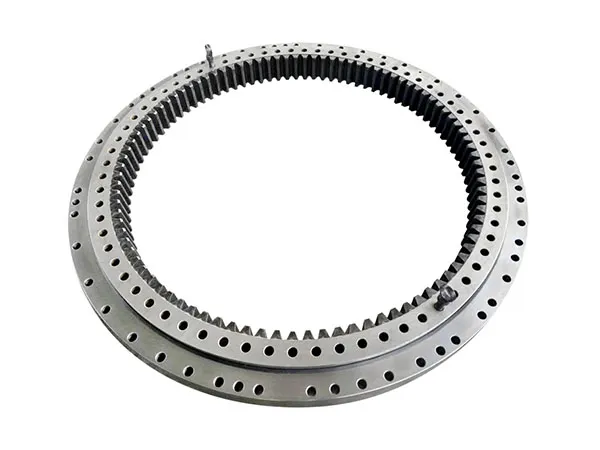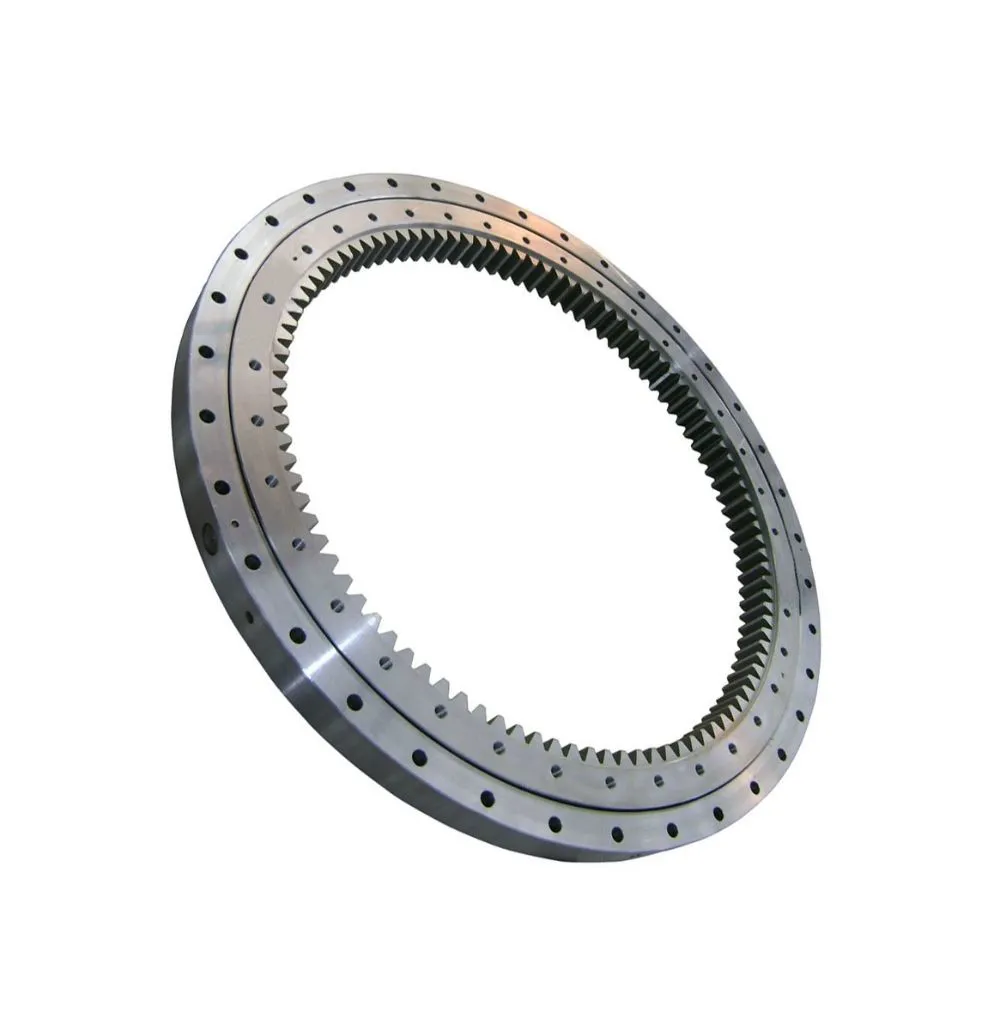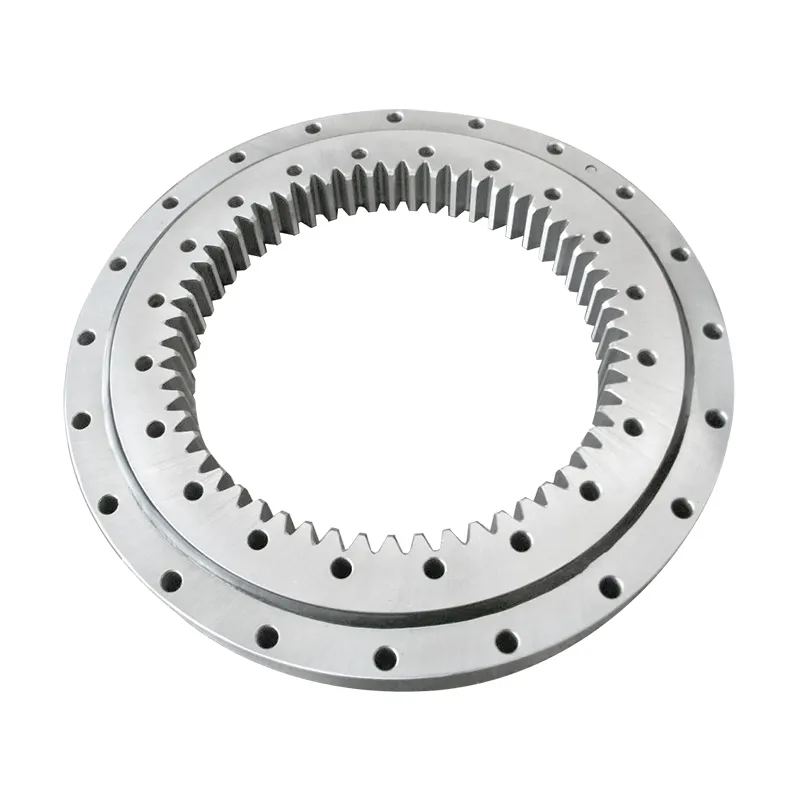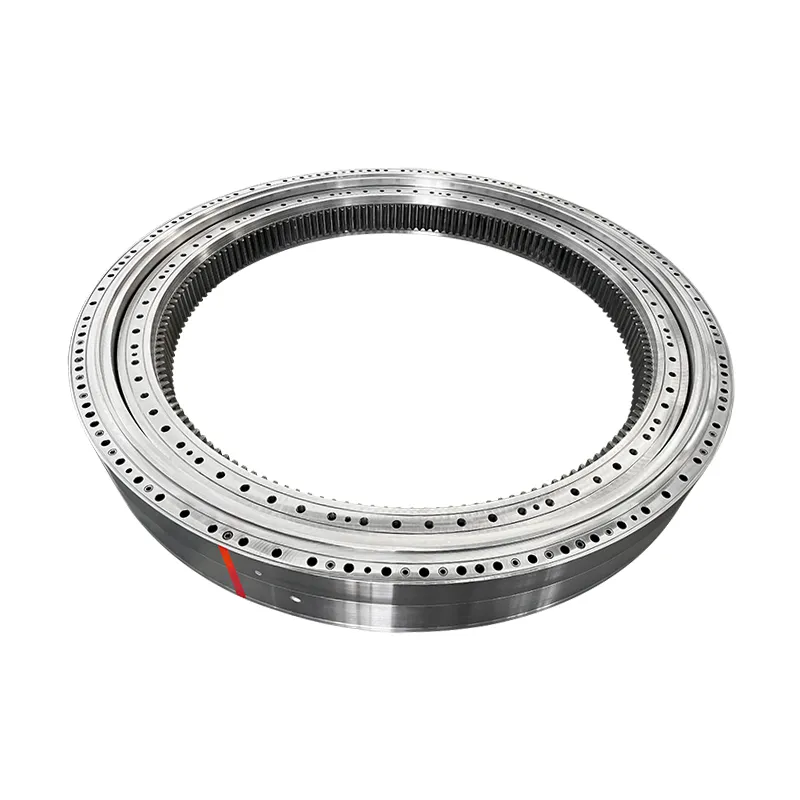- +86 13837949030 +86 15890619536
- info@lymcbearings.com export@lymcbearings.com
- Luoxin Industrial Cluster, Luoyang City,Henan Province,China
Time:2025-04-18 06:13:03 Source:Luoyang MC Bearing Technology Co.,Ltd.
Lubricating a slewing bearing is critical for ensuring smooth operation, reducing wear, and extending its service life. Here’s a step-by-step guide on how to properly lubricate a slewing bearing.
There are generally two main areas that require lubrication:
The Raceway: This is where the rolling elements (balls or rollers) run between the inner and outer rings.
The Gear Teeth: If the slewing bearing has integrated internal or external gear teeth.
Key Principles:
Right Lubricant: Using the correct type and grade of grease is paramount.
Right Amount: Too little or too much can cause problems.
Right Frequency: Lubrication intervals depend heavily on operating conditions.
Right Method: Applying the grease correctly ensures it reaches the critical areas.
Cleanliness: Contamination is a major enemy of bearings.

Consult the Manufacturer's Manual: THIS IS THE MOST IMPORTANT STEP. The equipment or bearing manufacturer's manual will specify the exact type of grease, the recommended lubrication frequency, and potentially specific procedures or grease fitting locations. Always prioritize their recommendations.
Safety First:
Ensure the machine is shut down, de-energized, and properly locked out/tagged out (LOTO) according to your site's procedures before performing any maintenance.
Wear appropriate Personal Protective Equipment (PPE), including safety glasses and gloves.
Gather Supplies:
Correct type and grade of grease (as specified by the manufacturer, typically an EP lithium complex grease, often NLGI Grade 2).
Grease gun (manual or powered). Ensure it's clean and loaded with the correct grease. Avoid mixing different grease types.
Clean rags or cloths.
Solvent (if needed for cleaning gear teeth, ensure compatibility).
Stiff brush (for cleaning gear teeth, if applicable).
Small tool or pick (for cleaning grease fittings).

Locate Grease Fittings: Find the grease fittings (zerks) located around the circumference of one of the bearing rings (usually the stationary one). There may be one, two, or several fittings spaced evenly.
Clean Fittings: Thoroughly clean the grease fittings and the area around them with a clean rag. Use a pick to remove any hardened grease or dirt from the fitting opening. This prevents contaminants from being injected into the bearing.
Attach Grease Gun: Securely attach the grease gun coupler to the fitting.
Inject Grease: Pump grease slowly and steadily into the fitting.
Rotate the Bearing: This is critical. While injecting grease (or immediately after injecting into one fitting before moving to the next), the bearing must be rotated slowly through at least two to three full revolutions. This rotation helps distribute the fresh grease evenly throughout the raceway and amongst the rolling elements, purging the old grease.
Observe the Purge: Continue injecting grease until you see fresh grease purging evenly from the entire circumference of the bearing seal. The purged grease should ideally form a consistent bead around the seal lip. This indicates the bearing cavity is full and helps flush out old grease and contaminants.
Caution: Avoid excessive pressure or pumping too fast, which could potentially damage the seals. If the bearing is difficult to purge, investigate potential blockages or hardened grease. Don't just keep forcing grease in.
Note: Some designs might have specific purge points or recommendations against excessive purging. Again, check the manual.
Repeat for All Fittings: If there are multiple raceway grease fittings, repeat steps 3-6 for each fitting, ensuring rotation occurs during or between fittings.
Clean Up: Wipe away any excess purged grease from the bearing exterior and surrounding areas. While a light film of grease on the seal lip can provide extra protection against contaminant ingress, large clumps can attract dirt.

Access the Gear: Ensure you have safe access to the gear teeth (either internal or external).
Clean the Teeth: Remove old, dirty, or dried-out grease and any accumulated debris from the gear teeth (both the slewing bearing gear and the mating pinion gear). Use rags, brushes, and appropriate solvents if necessary (ensure solvent is compatible and doesn't damage seals). The teeth should be as clean as possible.
Apply Gear Lubricant: Apply a suitable open gear lubricant (often a thicker, tackier grease than the raceway grease – check the manual) directly onto the flanks of the slewing bearing gear teeth or the pinion teeth.
Application can be done with a brush, paddle, spray system, or via an automatic lubrication system if fitted.
Distribute the Lubricant: Rotate the bearing slowly for several revolutions to ensure the lubricant is spread evenly across the full face width of all interacting gear teeth. Ensure proper meshing and coating.
Frequency: Gear lubrication frequency often differs from raceway lubrication. Visual inspection is key. Re-lubricate when the teeth appear dry or the lubricant film is broken.

Manufacturer Recommendation: Always the primary guide.
Operating Conditions: Increase frequency in harsh conditions (wet, dusty, high temperatures, heavy loads, high oscillation/vibration, continuous rotation). Decrease slightly in very light, clean conditions.
Typical Raceway Interval: Often ranges from every 50 to 200 operating hours, but can vary significantly.
Typical Gear Interval: Relies more on visual inspection. Check frequently (e.g., daily or weekly) and re-lubricate as needed.
Grease Compatibility: NEVER mix incompatible greases. If changing grease types, thoroughly purge the old grease out or consult the manufacturer. Different thickeners (e.g., lithium, calcium, polyurea) are often incompatible and can lead to lubricant breakdown.
Storage: Store grease containers sealed and clean to prevent contamination.
Record Keeping: Keep a log of lubrication dates, grease type used, and amount added (if measured).
By following these steps and prioritizing the manufacturer's recommendations, you can ensure your slewing bearing remains properly lubricated, maximizing its service life and reliability.